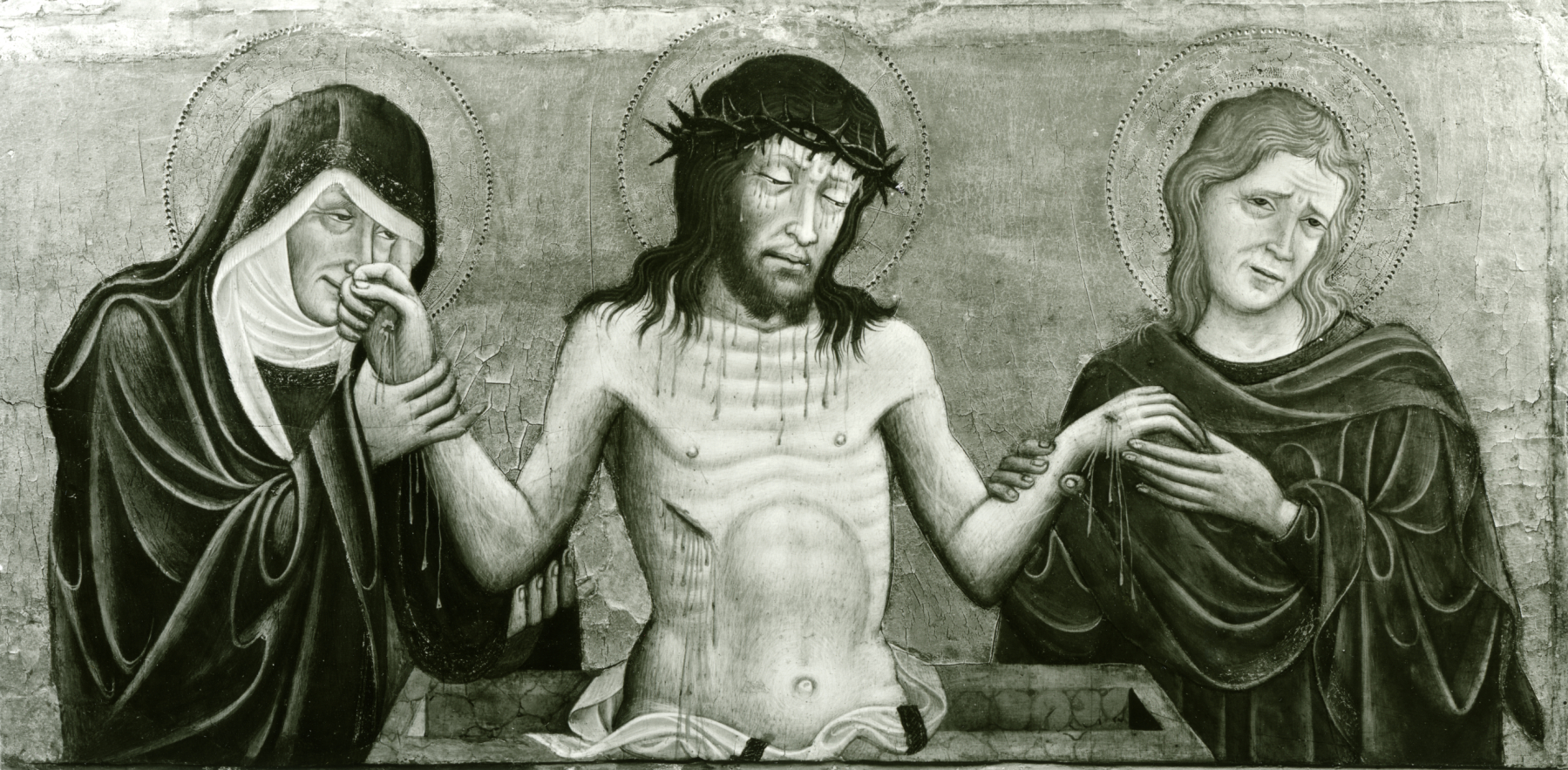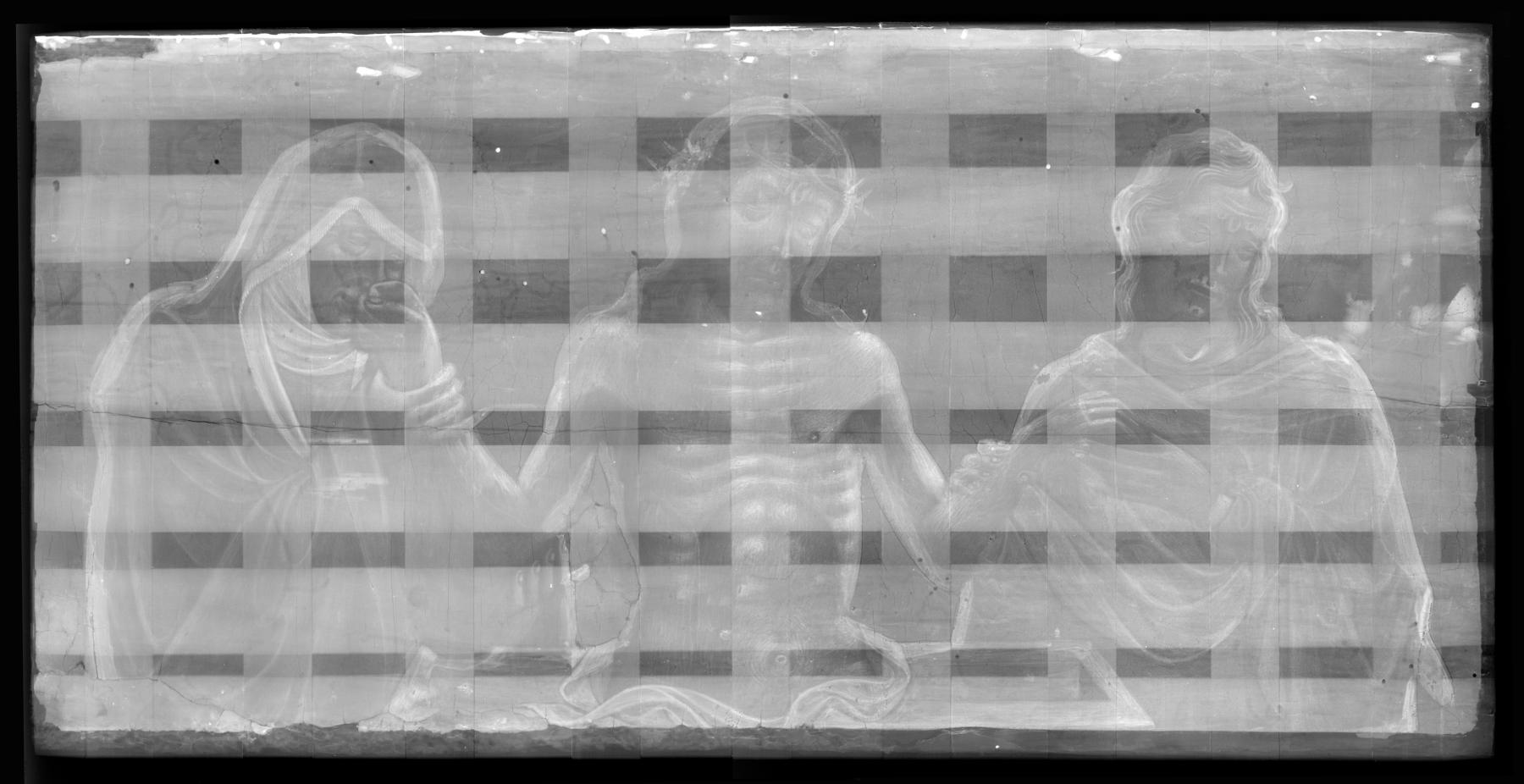Christ as the Man of Sorrows between the Virgin and St. John the Evangelist
(Renaissance Europe )
Dead yet upright in his tomb, Christ is shown as the “Man of Sorrows,” meaning his wounds—still dripping with fresh blood—are clearly visible to viewers, encouraging them to reflect on his suffering. Christ is mourned by his mother, the Virgin Mary (at the left), and the apostle John (at right). His eyes are downturned yet slightly opened, alluding to the Christian belief that Christ was able to conquer death through his resurrection and ascension into heaven.
As indicated by its small size and horizontal shape, the painting was originally part of the “predella,” or illustrated base, of a large altarpiece, other parts of which are now lost or unidentified. The panel was probably painted around 1450 by Michele di Matteo, one of the foremost painters in the city of Bologna during the first half of the 15th century. The elongated and expressive forms are typical of Matteo’s work and reflect his familiarity with the art of contemporary Siena, where he is in fact documented in 1447 working in collaboration with Giovanni di Paolo (see Walters 37.489 and 37.554). For another painting by Michele di Matteo at the Walters, see 37.513.
Provenance
Provenance (from the French provenir, 'to come from/forth') is the chronology of the ownership, custody, or location of a historical object.
Don Marcello Massarenti Collection, Rome [date and mode of acquisition unknown] [1897 catalogue: no. 73, as Florentine School, 14th century]; Henry Walters, Baltimore, 1902, by purchase; Walters Art Museum, 1931, by bequest.
Exhibitions
| 1962 | The International Style: The Arts in Europe Around 1400. The Walters Art Gallery, Baltimore. |
Geographies
Italy, Bologna (Place of Origin)
Measurements
Painted surface H: 11 3/16 x W: 24 in. (28.4 x 60.9 cm); Panel H: 12 x W: 24 1/4 x D excluding cradle: 3/8 in. (30.5 x 61.6 x 1 cm)
Credit Line
Acquired by Henry Walters with the Massarenti Collection, 1902
Location in Museum
Not on view
Accession Number
In libraries, galleries, museums, and archives, an accession number is a unique identifier assigned to each object in the collection.
In libraries, galleries, museums, and archives, an accession number is a unique identifier assigned to each object in the collection.
37.738




